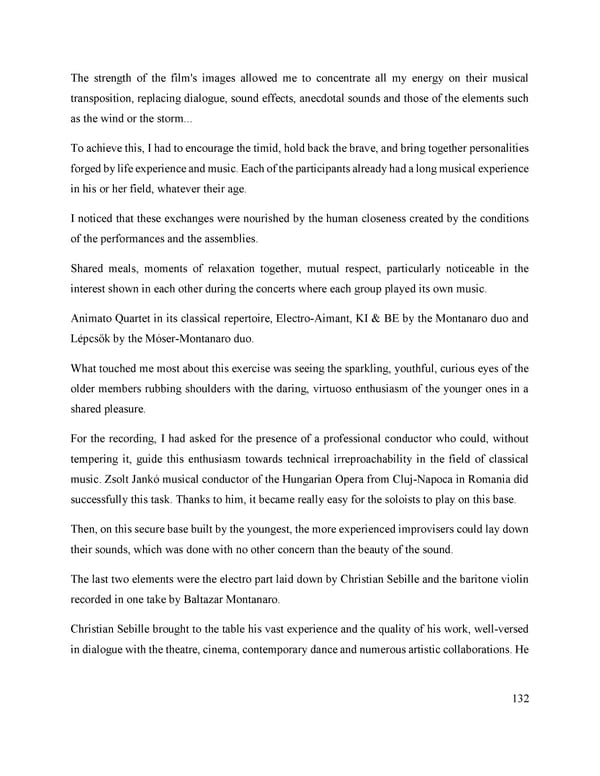The strength of the film's images allowed me to concentrate all my energy on their musical transposition, replacing dialogue, sound effects, anecdotal sounds and those of the elements such as the wind or the storm... To achieve this, I had to encourage the timid, hold back the brave, and bring together personalities forged by life experience and music. Each of the participants already had a long musical experience in his or her field, whatever their age. I noticed that these exchanges were nourished by the human closeness created by the conditions of the performances and the assemblies. Shared meals, moments of relaxation together, mutual respect, particularly noticeable in the interest shown in each other during the concerts where each group played its own music. Animato Quartet in its classical repertoire, Electro-Aimant, KI & BE by the Montanaro duo and Lépcsők by the Móser-Montanaro duo. What touched me most about this exercise was seeing the sparkling, youthful, curious eyes of the older members rubbing shoulders with the daring, virtuoso enthusiasm of the younger ones in a shared pleasure. For the recording, I had asked for the presence of a professional conductor who could, without tempering it, guide this enthusiasm towards technical irreproachability in the field of classical music. Zsolt Jankó musical conductor of the Hungarian Opera from Cluj-Napoca in Romania did successfully this task. Thanks to him, it became really easy for the soloists to play on this base. Then, on this secure base built by the youngest, the more experienced improvisers could lay down their sounds, which was done with no other concern than the beauty of the sound. The last two elements were the electro part laid down by Christian Sebille and the baritone violin recorded in one take by Baltazar Montanaro. Christian Sebille brought to the table his vast experience and the quality of his work, well-versed in dialogue with the theatre, cinema, contemporary dance and numerous artistic collaborations. He 132
 Lost Analogue: Exploring Film, Music, and Interdisciplinary Methods in Education Page 132 Page 134
Lost Analogue: Exploring Film, Music, and Interdisciplinary Methods in Education Page 132 Page 134